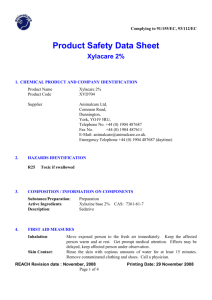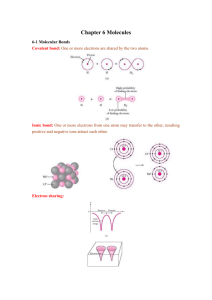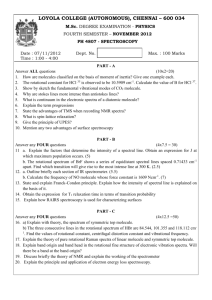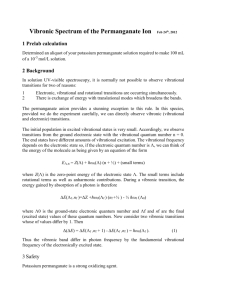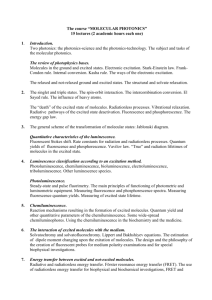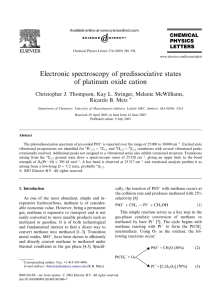Molecular populations
advertisement
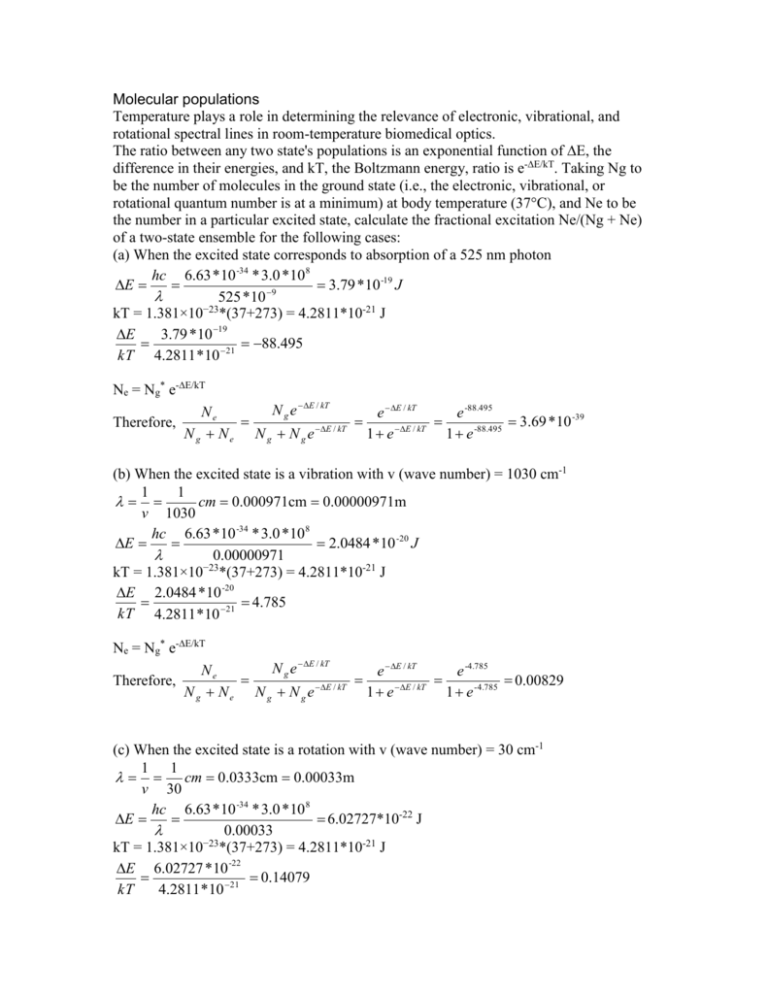
Molecular populations Temperature plays a role in determining the relevance of electronic, vibrational, and rotational spectral lines in room-temperature biomedical optics. The ratio between any two state's populations is an exponential function of ∆E, the difference in their energies, and kT, the Boltzmann energy, ratio is e-∆E/kT. Taking Ng to be the number of molecules in the ground state (i.e., the electronic, vibrational, or rotational quantum number is at a minimum) at body temperature (37°C), and Ne to be the number in a particular excited state, calculate the fractional excitation Ne/(Ng + Ne) of a two-state ensemble for the following cases: (a) When the excited state corresponds to absorption of a 525 nm photon hc 6.63 *10 -34 * 3.0 *10 8 E 3.79 *10 -19 J 9 525 *10 kT = 1.381×10−23*(37+273) = 4.2811*10-21 J E 3.79 *10 19 88.495 kT 4.2811 *10 21 Ne = Ng* e-∆E/kT N g e E / kT Ne e E / kT e -88.495 3.69 * 10 -39 Therefore, E / kT E / kT -88.495 N g Ne N g N ge 1 e 1 e (b) When the excited state is a vibration with v (wave number) = 1030 cm-1 1 1 cm 0.000971cm 0.00000971m v 1030 hc 6.63 *10 -34 * 3.0 *10 8 E 2.0484 *10 -20 J 0.00000971 kT = 1.381×10−23*(37+273) = 4.2811*10-21 J E 2.0484 *10 -20 4.785 kT 4.2811 *10 21 Ne = Ng* e-∆E/kT N g e E / kT Ne e E / kT e -4.785 0.00829 Therefore, N g N e N g N g e E / kT 1 e E / kT 1 e -4.785 (c) When the excited state is a rotation with v (wave number) = 30 cm-1 1 1 cm 0.0333cm 0.00033m v 30 hc 6.63 *10 -34 * 3.0 *10 8 E 6.02727*10-22 J 0.00033 kT = 1.381×10−23*(37+273) = 4.2811*10-21 J E 6.02727 *10 -22 0.14079 kT 4.2811 *10 21 Ne = Ng* e-∆E/kT N g e E / kT Ne e E / kT e 0.14079 0.46486 Therefore, N g N e N g N g e E / kT 1 e E / kT 1 e 0.14079 Based upon these calculations, is it reasonable to assume that essentially any molecule a photon encounters in the body will be in its ground vibrational state? Yes, it is. Because from the first calculation (a), we see that the photon on wavelength of the order of nanometers has the ratio of the number of excited molecules to the total number of molecules as extremely low. It’s ground electronic state? Yes, because from (b), the ratio is still quite small. It’s ground rotational state? No, because from (c), the ratio is significantly large.

